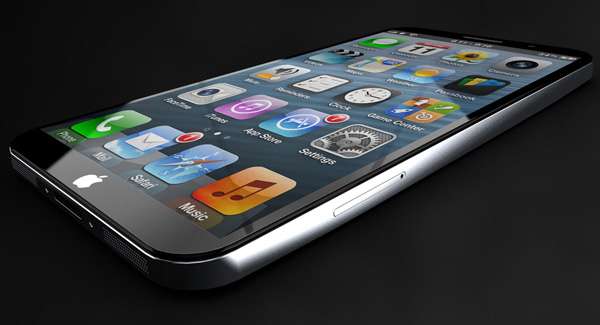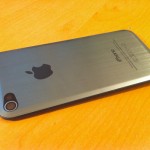Yes, yes – the iPhone 5 has barely been on sale for a week and the next iPhone is a long way off. In fact, Apple has most likely not even begun working on preliminary designs. So how can we speculate on what the next iPhone will have in store?
One thing is for sure: there will be a next iPhone. Although Apple produces computers, tablets, mp3 players and a whole host of other devices, most of its revenue comes from its iPhone range. Even if the iPhone 6 turns out to be a humongous turd it will still sell by the millions due to the reputation and loyal following that Apple has achieved.
But even though the iPhone 5 looks likely to become the most successful iPhone launch till date, it is also shaping up to be the most problematic. New faults and complaints from consumers are cropping up on almost daily basis. Apple has learned a lot of lessons from this year’s iPhone and its myriad problems, and many of these lessons may very likely shape the design of the next iPhone.

Screen Size
The “larger screen size rumour” existed for a long time before the iPhone 5 launch and it always seemed unlikely. After the iPhone 5 launch, it is even less likely than ever. Don’t believe any rumors that suggest Apple will increase the screen size again for the iPhone 6. Bumping up the iPhone’s screen from 3.5 to 4 inches caused a great many design problems and headaches and resulted in a less than desirable user experience (letterbox mode?).
There is already potential that the App Store could become fragmented with apps that do not work ideally for either sized screen, and for Apple to fiddle around with the dimensions again would just result in even more fragmentation.
Apple has increased the iPhone screen size due to industry pressures, but although most Samsung and HTC phones are getting larger and larger with each passing month, don’t expect Apple to follow suit. Apple is likely to stick with the same screen size and dimensions for the next few iPhones at least.
Carbon Fibre Body
Apple has apparently just ordered a huge quantity of carbon fibre materials from suppliers in Asia, ostensibly for “testing”, but sources closely involved state that the quantities ordered are too large for Apple to be simply running tests.
There is some speculation that these materials are being acquired for the iPad 4, which is also thought to come with a widescreen ratio like the iPhone 5, but there is a high chance that these materials could be used to replace the anodized aluminium used on the iPhone 5.
Anodized aluminium was chosen to replace the stainless steel used for the iPhone 4 and 4S because it is much lighter, but it has also resulted in large amounts of damaged iPhones and easy to scratch covers in a fiasco that has been dubbed “Scuffgate”.
Considering the number of complaints that Apple has received over this issue it is likely that they will ditch the problematic anodized aluminium. The main alternatives are to take a step backwards to stainless steel, or adopt the carbon fibre material that will be used for the newer iPad iPad 4.
Wireless Charging
Considering that wireless charging had been introduced as a feature of smartphones from Samsung and Nokia in 2012 it was strongly suspected that Apple would have something similar up its sleeves with the iPhone 5. These rumours seemed to be backed up by the reports of a new dock connector, now known as Lightning.
But wireless charging did not make an appearance on this year’s iPhone. However, Apple has recently been granted a patent for a novel wireless charging mat that could very likely make an appearance on some future Apple device like the iPhone 6.
The charging mat would be able to perform a number of different functions depending on the orientation of the iPhone when it is placed down. The example given is that the phone could simply charge when placed face down, or charge and sync content to iCloud when faced upwards.
Regardless, Apple patents just about every idea they think of so this is no guarantee that the charging mat will ever make an appearance in stores. Although wireless charging looks set to become more popular, Apple has already shunned industry favoured technologies such as NFC.
NFC?
NFC has become a hot topic in 2012 due to its applications for data sharing and mobile payments, and as such it was widely expected to be incorporated into the iPhone 5.
But it made no such appearance. Apple has said it will refrain from trying to launch any sort of mobile payments scheme, citing security concerns and the sheer complexity of such systems, and Apple’s Phil Schiller publically stated that he didn’t even see any value in NFC.
As NFC becomes more popular as we move from 2012 to 2013 Apple may be forced to change its opinion. Mobile payments aside, NFC allows for much easier transfer of images, videos, and even phone numbers, between devices. As NFC sharing apps become more common place on Android and Windows Phone devices there will also be more demand from iPhone users for such an app on iOS.
While the Apple design team are probably only just starting to brainstorm about the next iPhone many of the problems the company has faced with this year’s handset will likely shape the direction they take over the coming months. Despite the myriad problems that have plagued the iPhone 5 there has been no sign of a drop in demand, with the new phone selling more than the iPhone 4S did during its opening week and “iPhone 5” now being the fifth most searched for phrase on the internet.

This model is fantástic
This article gives clear idea designed for the new people of blogging, that genuinely how to do blogging and site-building.
Very intresting article about iphone 6